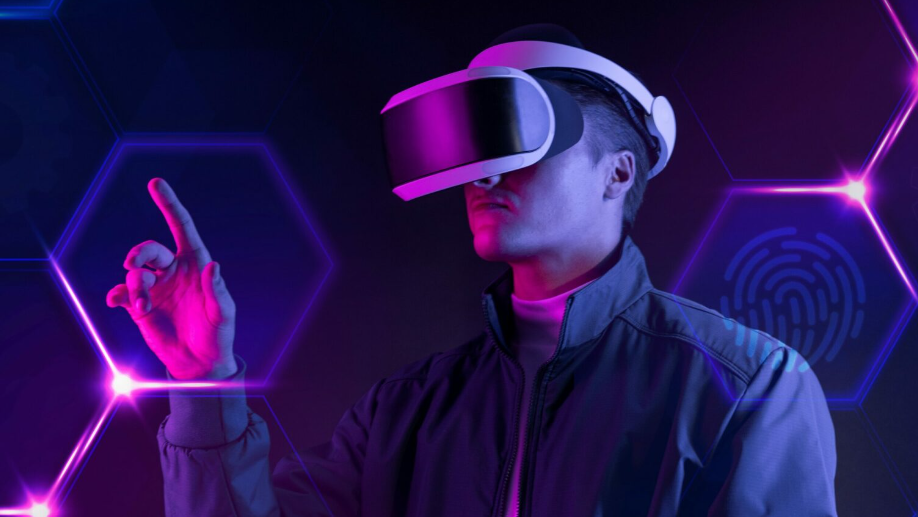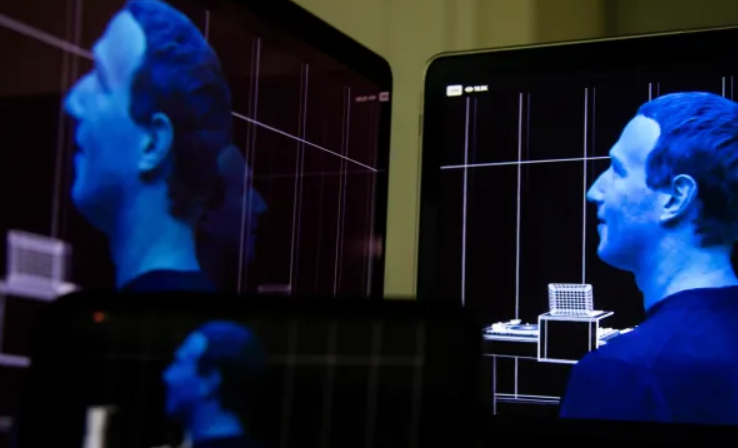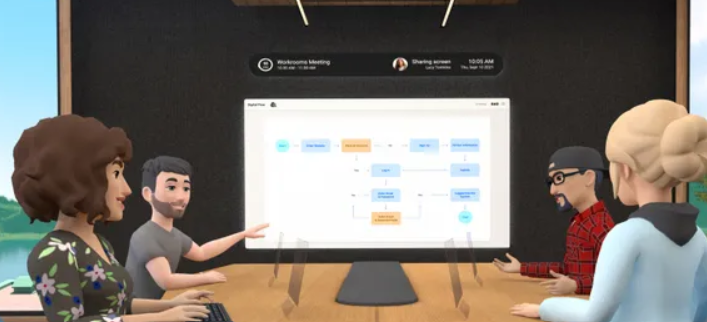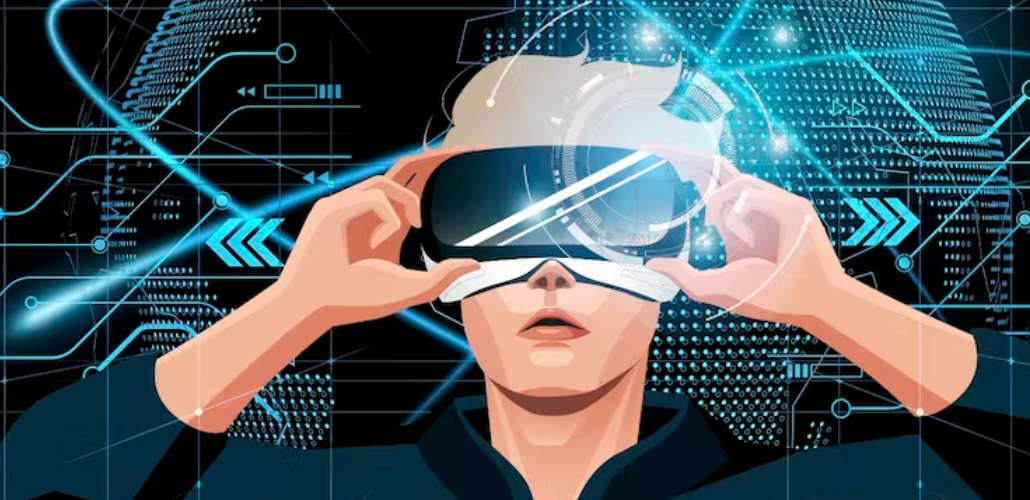It is a virtual or alternate world in which individuals are replaced by digital avatars and where they can meet regardless of their geographic location.
Sounds too simple? Well, that’s because it’s an oversimplification of an intricate set of ideas. The reality is that the metaverse is a complex and growing creature, expanding its reach across technological dimensions. To that extent, even HR in the metaverse doesn’t sound like an unimaginable concept.
Since the adoption of AI and automation became more widespread, the possibilities for the impact of technology have increased exponentially. Organizations continually seek to integrate new technologies into their existing processes.
But, in all seriousness, what does the metaverse mean and what possibilities does it have in store for human resources?
What does the metaverse mean?
When it comes to explaining what “the metaverse” really means, I don’t imagine the conversation is too far removed from discussions of the “Internet” in the 1970s. However, I think the answer really lies in the vagueness of the term. Here’s an exercise for you: find a sentence with “the metaverse” and replace it with “cyberspace”. Nine times out of ten, the meaning of the sentence will not change significantly.
This is because the metaverse does not refer to a specific type of technology, but to a change in the way we interact with technology. What makes the metaverse so transformative is that it is part of the development to create a new version of the world wide web: Web 3.0.
In essence, the metaverse is a more interactive version of today’s social media.
It can be comprised of virtual reality (VR), which is characterized by virtual spaces that continue to exist even if an individual is not present in it, as well as augmented reality (AR), which combines aspects of the digital and physical worlds. . However, VR and AR are not critical tools for participating in the metaverse. Spaces with virtual world aspects like Fortnite that can be accessed via PCs, game consoles, or even phones, could be metaverse.
The metaverse is also a digital economy, where you can create, buy, and sell goods. While one can perform these actions in Fortnite, it doesn’t necessarily mean that Fortnite is “the metaverse.” That would be a bit like saying that Google is “the Internet.”
On the other hand, just as it would be accurate to say that Google builds parts of the internet, it’s equally accurate to say that Fortnite creator Epic Games is building parts of the metaverse. And other companies are embarking on a similar investment. The recent rebranding of Facebook to Meta is a reflection of this.
The metaverse is many things. Where we are at the moment is a vague sense of things that can be called the metaverse.
HR in the metaverse: Which processes will convert first?
The metaverse is already here. Technologies that can take people into the metaverse era are already proliferating in the marketplace. A Look at What RR Can Potentially
1. Talent Acquisition
Let’s do business in the technology infrastructure of companies.
Virtual recruiting fairs are one example of candidates getting the opportunity to interact with potential employers and get a real-world demonstration of the type of company they might be working for. People want more companies to offer virtual tours that give potential candidates a taste of the office culture.
For example, check out this virtual tour from Deloitte developed by Blend Media that gives potential candidates a tour of the workplace. The tour can be viewed on the desk along with a pair of headphones to provide an immersive experience. Deloitte used Blend Media to create an engaging and interactive 360 experience that enabled candidates to feel confident and comfortable in their new office.
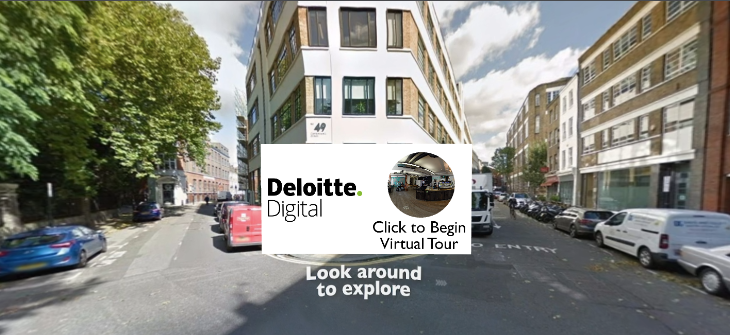
2. Work Structure
Work and team structures are likely to undergo a fundamental change in the metaverse workplace. The past two years have already seen the workforce shift towards the hybrid work structure, with meetings and collaborations on technology platforms.
The metaverse will transform work by making group conversations and collaborations much more immersive by encouraging interactions using hands-free devices and avatars instead of laptops and smartphones.
For example, Meta, formerly Facebook, created Horizon Workrooms to reinvent remote work collaboration. The social media giant described Workroom as a virtual meeting space where colleagues can work together from anywhere. Employees can join a meeting as an avatar or call into a virtual room using video calls through a computer.
With Workrooms, employees can use virtual keyboards to sketch ideas together, bring their computer and keyboard into virtual reality to work together, and also enjoy cooler conversations that were sorely missed in the early days of remote work.
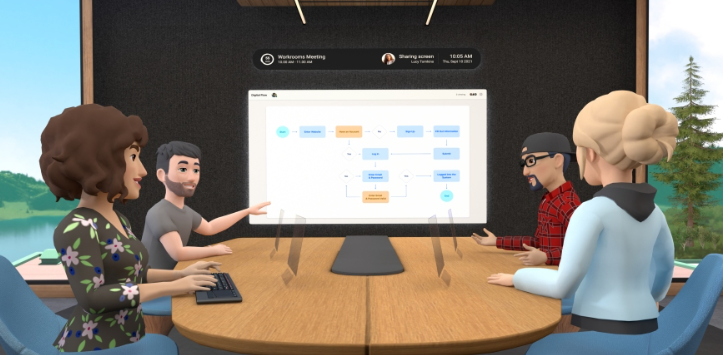
3. Learning and Development
Employees will need to learn to work within the metaverse. Human resources in the metaverse will witness an increase in change management training. The metaverse in the workplace will also mean investment in new technology. Virtual human resource management will need to reevaluate how to educate and train employees on these new technologies and software.
For now, metaverse in HR can create interactive and immersive learning experiences for employees with the help of virtual reality. A VR training experience can improve employee performance by 70%, and employers can train and educate employees by helping them run real-life scenarios in VR format to prepare them.
This is an example of how Make Real worked in partnership with Vodafone to develop a virtual reality app that would allow students to take on the role of a field engineer to install and maintain cellular infrastructure. A virtual reality training experience not only makes remote learning and skills development a possibility, but also sees a 96% reduction in training time.
The progress needed for the metaverse to transform HR
But the ultimate question is whether HR in the metaverse currently has a well-paved road to business success. The answer, for now, is no. When it comes to the practical application of the metaverse in the workplace, we have yet to see a strong contender.
Additionally, the costs of adopting the tools for use within the metaverse may not be something most companies are willing to bear. The technology for the metaverse is still under development and unstable to adopt. Getting every employee to have a VR headset to access the metaverse would cost companies a minimum of $600 per employee to implement. Such an expensive adoption would likely make sense at a time when the role of the metaverse in the workplace is more defined.
And as I’ve written before, the metaverse is not a specific type of technology, but rather a change in the way we interact with technology. So it would not only involve VR headsets, but companies might need to help employees upgrade their broadband packages to support the technology and also offer training.
Currently we are already working in a world where human resources systems proliferate in the market. Most organizations in the world, including those with big names like Nike, have between 6 and 15 HR solutions. Adding another tech stack to the plate would have to be approached with a great deal of caution.
The metaverse is an exciting new technology that businesses and HR departments need to be aware of. While the opportunities for the HR metaverse are still in their infancy, companies that take the time to consider the practical applications and opportunity to use this technology to improve interaction within their organization will be ahead of the curve when it comes to reap the benefits.
And, in today’s world, where meeting employee demands is more important than ever, companies must do everything they can to stay ahead when it comes to the next big thing.


